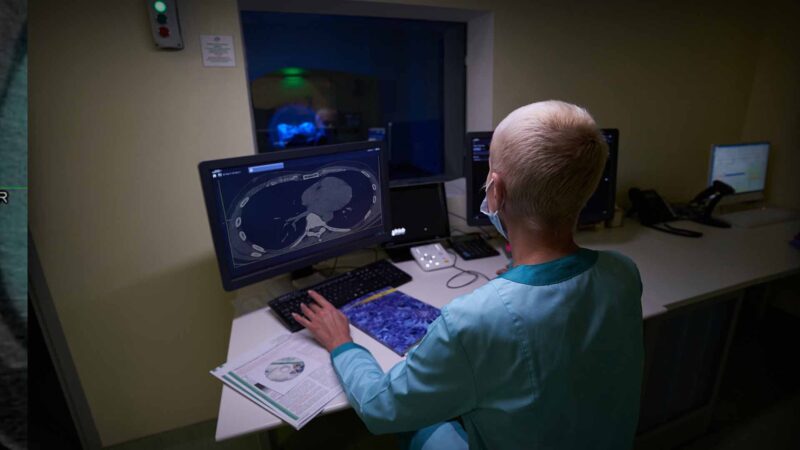NEW TREATMENT OPTIONS UNDER INVESTIGATION FOR PELVIC ORGAN PROLAPSE Design of next generation meshes using degradable polymers and stem cell based surgical constructs
Pelvic organ prolapse (POP) develops when tissues, pelvic floor muscles and ligaments that support the pelvic organs (bladder, uterus and bowel) are damaged, usually in childbirth. This injury causes the organs to shift, or ‘drop’, into the vagina or event outside of the body. This can lead to debilitating symptoms including poor bladder or bowel control and pain during sex
POP Facts
- 1 in 4 women globally in their 40s live with POP
- 1 in 2 women over 50 years of age live with POP
- $200 million annual cost to the Australian healthcare system
POP is a lifelong, potentially debilitating condition. Despite the high prevalence, there is no cure for POP.
Dr Shayanti Mukherjee, Research Group Head, Translational Tissue Engineering at the with her team at Hudson Institute of Medical Research is developing new ways to prevent and potential cure pelvic organ prolapse (POP). The technology aims to ultimately lead to safer and more effective treatment for women with pelvic organ prolapse (POP) using a woman’s own stem cells to boost the effectiveness of a degradable mesh.
Dr Shayanti Mukherjee specialises in innovative cell-based therapies for pelvic floor disorders and birth trauma injuries.
Dr Mukherjee’s research uses a woman’s own stem cells to create a 3D-printed degradable mesh, promising to avoid the complications that have plagued previous synthetic non-degradable meshes.
“By integrating cutting-edge techniques like electrospinning and 3D printing of materials and cells, I aim to revolutionise maternal urogynaecological health, offering transformative solutions and improving the wellbeing of women affected by this prevalent issue.”
“This research has the potential to revolutionise therapies for pelvic floor regeneration and enable personalised medicine for women,” she said.
“By advancing innovative cell-based therapies, we are on the brink of transforming the landscape of maternal urogynaecological health, promising a brighter and healthier future for women across the globe,” said Dr Mukherjee.
Source: Hudson Institute of Medical Research
You Might also like
-
Autonomy in Emergency Nurse Practitioner role
Stefanie Edson is a dedicated Nurse Practitioner specialising in Emergency Care, with a strong commitment to improving patient outcomes. As the Tasmanian State Chapter Secretary for the Australian College of Nurse Practitioners (ACNP), Stefanie advocates for the growth and recognition of the Nurse Practitioner profession across Tasmania and beyond.
-
Inaugural Rural and Remote Health Awards
Rural communities are a foundation of the economy and society and must be kept healthy.
There are significant personal, professional and financial rewards for rural healthcare professionals. However, there are also challenges – isolation, long hours, confusion about where to turn for support.
To acknowledge and celebrate the work of Rural and Remote Health Professionals, Rural Health Pro have launched the inaugural National Rural and Remote Health Awards.
-
25 years of non-indexation of nuclear medicine impeding access & affordability
The President of the Australasian Association of Nuclear Medicine Specialists (AANMS), Associate Professor Sze Ting Lee spoke with Australian Health Journal about the following:
Usual levels of nuclear medicine services in Australia each year
Current levels of nuclear medicine services in Australia
How changing demographics in people moving to regional areas has impacted access to nuclear medicine services
The nuclear medicine workforce including trainees
The key recommendations from the pre-budget submissionIn the lead up to the Australian Federal Budget in May 2023, Australian Health Journal reached out to peak health industry bodies to hear about their priorities, either noted in pre-budget submissions lodged with Federal Government in January 2023 or in recent forums such as the Strengthening Medicare Taskforce.



